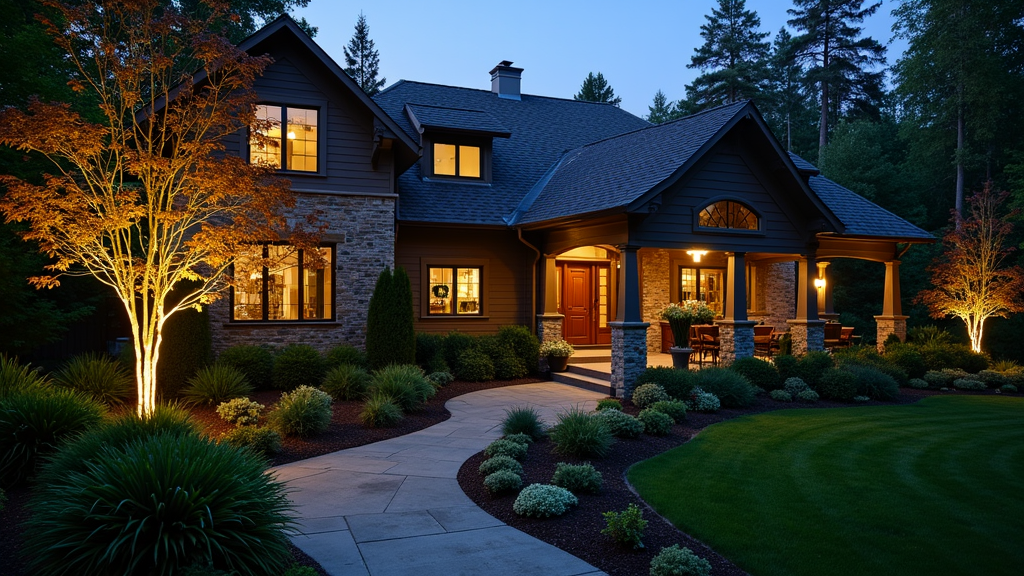Introduction
Stokesdale, North Carolina, is a picturesque town nestled in the heart of Guilford County. Known for its charming landscapes and serene environment, Stokesdale offers a unique set of challenges for landscaping enthusiasts and professionals alike. From its rolling hills to its clay-heavy soil, the terrain poses specific hurdles that require innovative solutions and expert knowledge. In this article, we will delve into the various landscaping challenges unique to the terrain of Stokesdale, NC, arming you with insights and strategies to transform your outdoor spaces.
Landscaping Challenges Unique to the Terrain of Stokesdale, NC
Landscaping in Stokesdale is no walk in the park. The area's distinct geographical features present an array of challenges that can thwart even the most seasoned gardeners. You might be wondering: what are these challenges? Well, let's break it down.
1. Clay Soil Composition
Understanding Clay Soil
One of the most prominent challenges in Stokesdale is its clay-heavy soil composition. Clay soil tends to retain moisture but drains poorly, leading to potential issues like waterlogging and root rot for plants.
Advantages of Clay Soil
Despite its downsides, clay soil does have some benefits:
- Rich in nutrients Can hold moisture for drought-resistant plants
Tips for Managing Clay Soil
To effectively manage clay soil in your landscaping endeavors:

- Amend with organic matter Aerate regularly Choose appropriate plant species
2. Elevation Changes
Navigating Stokesdale's Topography
Stokesdale's rolling hills create a dynamic topography that can complicate landscaping projects. Elevated areas may experience erosion while lower spots can become stagnant pools after rain.
Effective Erosion Control Techniques
To combat erosion:
- Utilize terracing Plant ground cover Install drainage systems
3. Seasonal Weather Variations
The Impact of Weather on Landscaping Decisions
Stokesdale experiences a range of weather conditions throughout the year—hot summers and cold winters can both affect plant growth and landscape maintenance.
Selecting Seasonally Resilient Plants
Choosing plants that thrive in local climate conditions is essential:
- Native species often adapt better Consider seasonal bloomers for continuous color
4. Wildlife Interactions
Managing Local Fauna in Landscaping Projects
From deer munching on your garden to rabbits nibbling at young shoots, wildlife interactions can pose significant barriers when designing gardens in Stokesdale.
Strategies for Minimizing Wildlife Damage
- Use fencing or repellents Choose deer-resistant plants
5. Water Drainage Issues
Identifying Drainage Problems on Slopes and Flats

Because of its varied terrain, water stagnation can be an issue in certain areas while others might suffer from rapid drainage.
Implementing Effective Drainage Solutions
- French drains can help redirect water flow. Rain gardens provide natural absorption zones.
6. Soil pH Levels
Understanding Soil Chemistry in Landscaping Efforts
Different areas may have varying pH levels that affect plant health.
Testing and Adjusting Soil pH
Regular testing allows for informed amendments:
- Add lime to increase pH (make it more alkaline). Incorporate sulfur to reduce pH (make it more acidic).
7. Limited Native Plant Options
Exploring Flora That Thrives Locally
While there’s an abundance of native plants beneficial for local ecosystems, options may feel limited compared to exotic species.
Benefits of Native Plants
Native plants typically require less maintenance and are better suited to local pests and diseases.
8. Landscape Design Aesthetics vs Functionality
Balancing Beauty with Utility
Striking a balance between aesthetic appeal and practical use can be tricky when dealing with challenging terrains.
Design Strategies for Success
Incorporating functional pathways or seating areas enhances usability without sacrificing beauty.
9. Pest Management Solutions
Tackling Common Pests Found in Stokesdale Landscapes
From aphids to beetles, pest management becomes critical when maintaining a healthy landscape.
Integrated Pest Management (IPM) Strategies
Utilizing IPM techniques helps minimize chemical use while effectively managing populations.
10. Maintenance Requirements for Diverse Landscapes
Understanding Different Needs Across Varied Terrains
Maintenance needs vary greatly across different planting zones within your property.
Creating a Maintenance Schedule
Establishing a routine based on specific landscape sections helps ensure overall health.
FAQs About Landscaping Challenges Unique to Stokesdale Terrain
1. What are common landscaping issues faced by residents of Stokesdale?
Residents often deal with clay soil composition, elevation changes leading to erosion or drainage issues, seasonal weather variations affecting plant growth, and wildlife interactions damaging gardens.
2. How do I improve my clay soil for better planting?
Amending clay soil with organic materials like compost or peat moss improves drainage and aeration; regular aeration also promotes healthier root growth.
3. What types of native plants should I consider for my garden?
Consider native options like Eastern Redbud trees or Black-eyed Susans as they thrive well without requiring extensive care or resources while supporting local wildlife.
4. How can I prevent erosion on my sloped property?
Utilizing terracing techniques combined with native ground cover plants helps stabilize slopes while providing beautiful natural habitats.
5. What pest management techniques work best locally?
Integrated Pest Management (IPM) techniques focus on prevention through habitat manipulation along with biological controls rather than relying heavily on chemical pesticides alone.
6. How do seasonal weather patterns impact landscaping choices?
The varying climate necessitates choosing seasonally resilient plants—those that bloom at different times throughout the year will ensure continuous interest across all seasons!
Conclusion
Landscaping in Stokesdale comes with its own set of unique challenges—be it dealing with tough clay soils or navigating rolling hills—but armed with knowledge and strategic planning, anyone can create an outdoor space that's both beautiful and functional! Whether you're tackling erosion control or selecting resilient plant species suited for this region's climate variations—understanding these factors will greatly enhance your success rate in achieving your desired landscape vision! Adaptability is key; embrace what nature has given you while crafting something truly spectacular!
By understanding "Landscaping Challenges Unique to the Terrain http://donovannxww436.lowescouponn.com/edible-landscaping-growing-food-in-your-greensboro-garden of Stokesdale, NC," you're already one step closer to overcoming them! So roll up those sleeves; it's time to dig deep into creating landscapes that reflect both personal style and respect local ecological dynamics! Happy gardening!